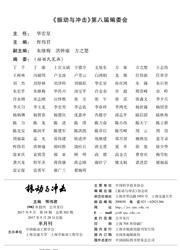

 中文摘要:
中文摘要:
现代民用飞机须严格按照适航规章要求进行设计,国内现代民用飞机的气动弹性设计参照的适航条款主要为CCAR25.629条款"气动弹性稳定性要求"和咨询通报AC25.629-1A"Aeroelastic Stability Substantiation of Transport Category Airplane"。低速颤振模型风洞试验是飞机气动弹性设计中的一种有效技术手段,用以摸清飞机的亚音速颤振特性、影响颤振特性的敏感参数及其影响规律,并验证理论分析结果;低速颤振模型风洞试验同时也是民用飞机适航符合性的一种验证方法,用以表明飞机气动弹性设计的适航符合性。结合某型号飞机研制经验对民用飞机低速颤振模型风洞试验的适航符合性验证技术进行探讨研究,提出了切实可行的民用飞机低速颤振模型风洞试验适航符合性设计和验证方案。
 英文摘要:
英文摘要:
Modem civil aircrafts must be designed strictly according to airworthiness requirements. The aeroelastic design of domestic modern civil aircrafts is mainly based on the item CCAR25. 629 "Aeroelastic Stability Requirement" and the advisory circular AC25. 629-1A "Aeroelastic Stability Substantiation of Transport Category Airplane". Low speed flutter model wind tunnel test is a necessary technical means for the aeroelastic design of a civil aircraft, it is conducted to identify the subsonic flutter characteristics of a civil aircraft, their sensitive parameters and their effects on the flutter features, and to validate the theoretical analysis results. Meanwhile, the low speed flutter model wind tunnel test is also a necessary means for a civil aircraft design to show its airwothiness compliance. Here, the airworthiness compliance technique of low speed flutter model wind tunnel test for civil aircrafts was discussed based on the design and manufacturing experience of a certain aircraft type, and an effective scheme of airworthiness compliance design and verification for low speed flutter model wind tunnel test was put forward.
 同期刊论文项目
同期刊论文项目
 同项目期刊论文
同项目期刊论文
 期刊信息
期刊信息
